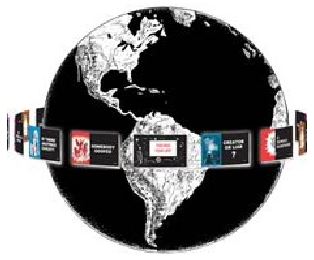New Reina-Valera Gomez - Back to Purity
- Issue Date: May/June 2010
The continually bubbling controversy over the English language Bibles appears set to be duplicated in the Spanish world. The current discussion of the English versions revolves around the concept of the "two streams" of supporting manuscripts.
One stream is traced from the original "autographs" first to Antioch of Syria. From there, careful copies were made for distribution. As other languages were required, translations were made by faithful believers committed to communicating the exact meaning of the originals.
Copies and remnants of these faithful translations can be traced to a line of believers across Europe during 1500 years of harassment, being driven into hiding, or burned at the stake.
This line of accurate copies of God`s Words would spark the Reformation and ultimately result in the Authorized King James Version, the "thus saith the Lord" for several centuries of English speakers.
The other stream of manuscripts flows through Alexandria, Egypt. Copying was sloppy and translations show a consistent effort to inject unbiblical theology and philosophy and diminish the deity of Jesus.
This stream flows up through the Vatican and ultimately formed the polluted Westcott and Hort Greek on which the "modern" bibles are based. (See Did the Catholic Church Give Us The Bible? by David W. Daniels.)
So, where did the line of Spanish Bible translations fit into this? The first Reina-Valera Spanish Bible became available in 1609 —based on the same faithful manuscripts that support the KJV. It served for some 300 years as the "Word of God in Spanish."
However, it was suppressed because most of the Spanish world was under the heel of Rome. The whole history of the Reformation was a struggle between the popes and the Reformers over control of the Bible. In the English world, the Reformers won. In Spain and Latin America, the Vatican won.
As religious freedom spread, Rome`s influence was beaten back and in 1909 an updated RV was released. Unfortunately, the Spanish translators used some Alexandrian sources damaging the purity of the 1909 RV. In 1960, another "update" was released. By this time the Alexandrian pollution was so widespread that the 1960 version was seriously tainted.
By 1990, the 1960 RV had become deeply entrenched. Yet, Latin church leaders remained concerned about its purity. Humberto Gomez, a native of Mexico, veteran pastor and church planter, realized that, by using the internet, a host of collaborators, from scholarly linguists to seasoned pastors, could work together to produce a version faithful to the originals that formed the KJV, yet maintaining the linguistic beauty of the RV.
He began to personally collect information on the problems in the 1960 RV. Then he submitted his notes to other concerned church leaders including some who were credentialed linguists with fluency in several related languages.
Using their input, in 2004, a preliminary draft was circulated widely among Spanish pastors, missionaries, and other Christians with professional expertise in Bible translation. Comments poured in.
Each was carefully considered as it related to the purity of the Reformation scriptures. After years of this process, a final version was published in 2010. It is now being printed and distributed by several publishers. Since the 2004 version was made public, the same kind of debate that surrounds the English versions has increased in intensity.
The central question in both debates is the purity of the sources and integrity of the copyists and translators. Honest researchers such as David W. Daniels, have concluded that the northern stream has a purity unmatched by the other, Vatican-supported stream of manuscripts.
- See more articles on related topics:
- Bible Versions
- Spanish Bibles
Other Articles from May/June 2010:
More on Bible Versions:
Products of Interest:
-

Did the Catholic Church Give Us the Bible?
208 pages
The Bible has two histories. One is of God preserving His words through His people. The other is of the devil using Roman Catholic "scholars" to pervert God’s words and give us corrupt modern Bibles. -

God's Bible in Spanish
240 pages
Until now, no Spanish Bible was completely free from corrupted Alexandrian texts. Here’s the fascinating story of the making of the Reina Valera Gomez Bible 2010, the first Spanish Bible to faithfully follow the Received Text in every single verse.



